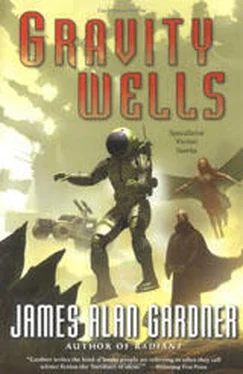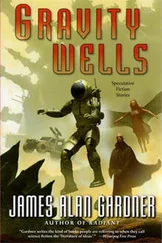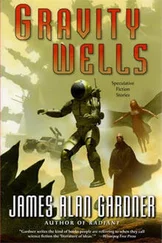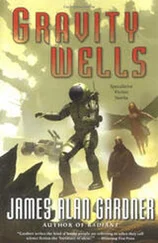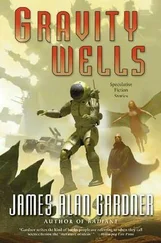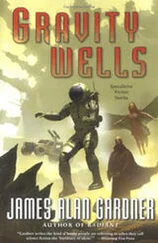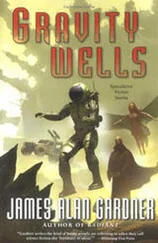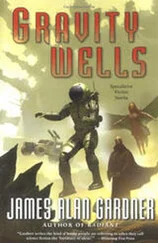James Gardner - Kent State Descending the Gravity Well - An Analysis of the Observer
Здесь есть возможность читать онлайн «James Gardner - Kent State Descending the Gravity Well - An Analysis of the Observer» весь текст электронной книги совершенно бесплатно (целиком полную версию без сокращений). В некоторых случаях можно слушать аудио, скачать через торрент в формате fb2 и присутствует краткое содержание. Год выпуска: 2005, ISBN: 2005, Издательство: Eos, Жанр: Фантастика и фэнтези, на английском языке. Описание произведения, (предисловие) а так же отзывы посетителей доступны на портале библиотеки ЛибКат.
- Название:Kent State Descending the Gravity Well: An Analysis of the Observer
- Автор:
- Издательство:Eos
- Жанр:
- Год:2005
- ISBN:0-06-008770-6
- Рейтинг книги:4 / 5. Голосов: 1
-
Избранное:Добавить в избранное
- Отзывы:
-
Ваша оценка:
- 80
- 1
- 2
- 3
- 4
- 5
Kent State Descending the Gravity Well: An Analysis of the Observer: краткое содержание, описание и аннотация
Предлагаем к чтению аннотацию, описание, краткое содержание или предисловие (зависит от того, что написал сам автор книги «Kent State Descending the Gravity Well: An Analysis of the Observer»). Если вы не нашли необходимую информацию о книге — напишите в комментариях, мы постараемся отыскать её.
Vol. 69, #3, No. 592, Winter 1995. Published in 2005 as part of
short stories collection.
Kent State Descending the Gravity Well: An Analysis of the Observer — читать онлайн бесплатно полную книгу (весь текст) целиком
Ниже представлен текст книги, разбитый по страницам. Система сохранения места последней прочитанной страницы, позволяет с удобством читать онлайн бесплатно книгу «Kent State Descending the Gravity Well: An Analysis of the Observer», без необходимости каждый раз заново искать на чём Вы остановились. Поставьте закладку, и сможете в любой момент перейти на страницу, на которой закончили чтение.
Интервал:
Закладка:
Kent State Descending the Gravity Well: An Analysis of the Observer
According to the Kerr-Newman model of a rotating black hole, there is a region just outside the event horizon where certain space and time vectors switch properties with each other. This is just mathematics, you understand, merely a quirk of the formulas — physically, nothing changes wildly until you get inside the black hole itself, and then who cares what happens? Double-deluxe chocolate-chip cookies could spontaneously spring into being and it wouldn’t matter to the universe outside. Reality may break down inside a black hole, but the effects never percolate back into our familiar space.
Just outside the black hole, however, if it’s rotating, if the model is correct, there is a region called the ergosphere where certain vector fields describing the flow of space and time do a flip-flop. When I was trying to understand what this meant, I told myself that places became moments and moments became places.
Think of that. Places became moments. Moments became places.
Years and years ago, I did my master’s thesis on black holes. In those days, I could have explained the math to you... but now I’ve forgotten it all. I look at the book containing my thesis and the only thing I remember is how hard it was to type all those equations. The meaning of the equations has dribbled out of my understanding a grain at a time, and now all I hold is this: just outside a spinning black hole, in a region called the ergosphere, places become moments and moments become places.
Think of that.
Kent State University entered the ergosphere at 12:24 P.M. on Monday, May 4, 1970. That was the moment the Ohio State National Guard opened fire on demonstrators protesting American involvement in Vietnam and Cambodia. Four students were killed; nine others were wounded.
Kent State ceased to be a place and became a moment. Like Hiroshima. Like Chernobyl. Kent State fell off the map and became thirteen seconds of gunfire on a warm spring day. And maybe it kept dropping down the gravity well, from the ergosphere straight into the black hole.
Here is an ugly truth: back in 1970, when I heard the news about the Kent State killings, I felt smug.
I was fifteen years old. I was Canadian. It pleased me in a spiteful way that the U.S. had so blatantly screwed up.
I was fifteen. I was self-righteous. I had never been to a funeral.
The vectors that flip-flop in the ergosphere indicate symmetries in the gravitational field. One vector is timelike; it indicates that the laws of gravity don’t change over time. The other vector is space-like; it describes the rotational symmetry of the black hole.
These vectors are called Killing vectors. Really. They’re named after a Professor Wilhelm K. J. Killing of the University of Mьnster. He gave his name to such geometrical objects in 1892, many decades before Kerr and Newman used them in their model of a rotating black hole.
Killing vectors.
May 4, 1990, was a Friday, but all the local newspapers saved their Kent State retrospectives for the weekend editions. I bought three papers that Saturday — the Globe & Mail for its book reviews, the Kitchener-Waterloo Record for local movie listings, and the Toronto Star for Doonesbury.
I didn’t realize it was the twentieth anniversary of Kent State until I saw a commemorative article in the first paper I read. That article was written by a Kent State journalism student who happened to be in the right place at the right time to get the greatest news story of his life. The reporter told about his day: the rumors that something bad had happened at the noon rally, his race to get his camera, his sneaking through bushes to reach the parking lot where the killings took place, many details about the aftermath... but strangely, the reporter omitted any information about the victims themselves. He didn’t even give their names.
The article in the second paper talked about the effect of the killings on the American psyche. Was it really the turning point in the Vietnam War, the moment when public consciousness crossed some unerasable line? Or was it just another straw on the camel’s bending back?
The victims weren’t named in this article either. Just four dead students. Four dead in O-hi-o.
Kent State is about 270 kilometers from my living room. I’ve never been there; it feels like a very distant place.
My wife’s parents live more than 450 kilometers away. We visit them several times a year.
It was only in the third paper that I found an actual list of who died. Four students, two women, two men:
Allison Krause
Jeff Miller
Sandy Lee Scheuer
Bill Schroeder
This was the only information given about the victims: just their names. The article in the third paper was about the backroom machinations that made sure no charges were successfully laid against the National Guard.
I sat in my living room, three thick newspapers on the floor around my chair, and I wondered why all three treated the victims as if they were irrelevant to the story. Certainly, the National Guard didn’t specifically target those four students; the Guard could easily have killed four different people, or a dozen people, or none. But why should that matter? Randomness shouldn’t mean irrelevance.
The papers bypassed the reality of the victims, their lives, the grief of their friends and family, as if those things had nothing to do with the “real” story.
As if the four dead students were only there for the body count.
As if the students had no reality either before or after the shootings, but only in the moments when they lay bleeding on the pavement of a parking lot.
McGregor grimaced as he reached the door of the time chamber. Inside, the lights had been muted from their usual glare to a moody brown tint. Dimness meant a funeral run: the group going out this morning would not be coming back.
If he’d been in charge — McGregor spent much of his time dreaming how the Corrections Institute would change if he were in charge — if McGregor ever got to be in charge, he’d scrap the gloom and doom, maybe put in something extravagant like orange flashers or a circus-holo show. People going out on a funeral run were depressed enough already. They didn’t need the brooding browns, and the staff talking in hushed tones. Why not throw a bash instead? Crack open the booze, crank up the music, give the poor bums some last good memories of the twenty-third century. But the Executive Board were all tight-collars, sending out memos about “good taste” and “appropriateness,” and they never, ever had to push the button that sent people off to die.
McGregor passed an eye over the four people in the chamber — not lingering long enough to fix the faces in his memory because he had enough bad dreams already, thank you very much — but he wanted to see whom he was dealing with. His subjects. Two male, two female. Apparent ages somewhere between 18 and 24. No way to tell if they’d been sculpted for the run or if these were their actual faces. Some correction jobs had specific requirements, some just needed bodies.
None of the people, the subjects, looked familiar. McGregor prided himself on his knowledge of history. A good grasp of history was what distinguished a professional from a mere button-pusher. He’d recognize faces taken from history if they were important. These weren’t; they were just faces. And he’d spent far too long looking at them. Tonight in his dreams, he might remember that dimpled chin, those sleepy eyes. He didn’t need that crap, especially not when Joanne already complained how restless he was in bed. Grunting, he turned away from the door and stalked to the control booth.
Читать дальшеИнтервал:
Закладка:
Похожие книги на «Kent State Descending the Gravity Well: An Analysis of the Observer»
Представляем Вашему вниманию похожие книги на «Kent State Descending the Gravity Well: An Analysis of the Observer» списком для выбора. Мы отобрали схожую по названию и смыслу литературу в надежде предоставить читателям больше вариантов отыскать новые, интересные, ещё непрочитанные произведения.
Обсуждение, отзывы о книге «Kent State Descending the Gravity Well: An Analysis of the Observer» и просто собственные мнения читателей. Оставьте ваши комментарии, напишите, что Вы думаете о произведении, его смысле или главных героях. Укажите что конкретно понравилось, а что нет, и почему Вы так считаете.
